Re-feeding versus discarding gastric residuals to improve growth in preterm infants
- PMID: 37387544
- PMCID: PMC10312053
- DOI: 10.1002/14651858.CD012940.pub3
Re-feeding versus discarding gastric residuals to improve growth in preterm infants
Abstract
Background: Routine monitoring of gastric residuals in preterm infants on tube feeds is a common practice in neonatal intensive care units used to guide initiation and advancement of enteral feeding. There is a paucity of consensus on whether to re-feed or discard the aspirated gastric residuals. While re-feeding gastric residuals may aid in digestion and promote gastrointestinal motility and maturation by replacing partially digested milk, gastrointestinal enzymes, hormones, and trophic substances, abnormal residuals may result in vomiting, necrotising enterocolitis, or sepsis.
Objectives: To assess the efficacy and safety of re-feeding when compared to discarding gastric residuals in preterm infants. SEARCH METHODS: Searches were conducted in February 2022 in Cochrane CENTRAL via CRS, Ovid MEDLINE and Embase, and CINAHL. We also searched clinical trial databases, conference proceedings, and the reference lists of retrieved articles for randomised controlled trials (RCTs) and quasi-RCTs.
Selection criteria: We selected RCTs that compared re-feeding versus discarding gastric residuals in preterm infants.
Data collection and analysis: Review authors assessed trial eligibility and risk of bias and extracted data, in duplicate. We analysed treatment effects in individual trials and reported the risk ratio (RR) for dichotomous data and the mean difference (MD) for continuous data, with respective 95% confidence intervals (CIs). We used the GRADE approach to assess the certainty of evidence.
Main results: We found one eligible trial that included 72 preterm infants. The trial was unmasked but was otherwise of good methodological quality. Re-feeding gastric residual may have little or no effect on time to regain birth weight (MD 0.40 days, 95% CI -2.89 to 3.69; 59 infants; low-certainty evidence), risk of necrotising enterocolitis stage ≥ 2 or spontaneous intestinal perforation (RR 0.71, 95% CI 0.25 to 2.04; 72 infants; low-certainty evidence), all-cause mortality before hospital discharge (RR 0.50, 95% CI 0.14 to 1.85; 72 infants; low-certainty evidence), time to establish enteral feeds ≥ 120 mL/kg/d (MD -1.30 days, 95% CI -2.93 to 0.33; 59 infants; low-certainty evidence), number of total parenteral nutrition days (MD -0.30 days, 95% CI -2.07 to 1.47; 59 infants; low-certainty evidence), and risk of extrauterine growth restriction at discharge (RR 1.29, 95% CI 0.38 to 4.34; 59 infants; low-certainty evidence). We are uncertain as to the effect of re-feeding gastric residual on number of episodes of feed interruption lasting for ≥ 12 hours (RR 0.80, 95% CI 0.42 to 1.52; 59 infants; very low-certainty evidence).
Authors' conclusions: We found only limited data from one small unmasked trial on the efficacy and safety of re-feeding gastric residuals in preterm infants. Low-certainty evidence suggests re-feeding gastric residual may have little or no effect on important clinical outcomes such as necrotising enterocolitis, all-cause mortality before hospital discharge, time to establish enteral feeds, number of total parenteral nutrition days, and in-hospital weight gain. A large RCT is needed to assess the efficacy and safety of re-feeding of gastric residuals in preterm infants with adequate certainty of evidence to inform policy and practice.
Copyright © 2023 The Cochrane Collaboration. Published by John Wiley & Sons, Ltd.
Conflict of interest statement
TA is an Associate Editor of Cochrane Neonatal, but was not otherwise involved in the editorial process or decision‐making for this article.
ST is an Associate Editor of Cochrane Neonatal, was not otherwise involved in the editorial process or decision‐making for this article.
VVR has no interest to declare.
BR has no interest to declare.
SR has no interest to declare.
Figures
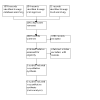
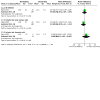
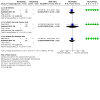
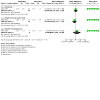
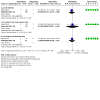
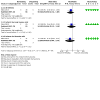
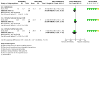
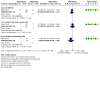
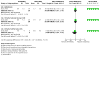
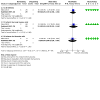
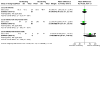
Update of
-
Re-feeding versus discarding gastric residuals to improve growth in preterm infants.Cochrane Database Syst Rev. 2019 Jul 8;7(7):CD012940. doi: 10.1002/14651858.CD012940.pub2. Cochrane Database Syst Rev. 2019. Update in: Cochrane Database Syst Rev. 2023 Jun 30;6:CD012940. doi: 10.1002/14651858.CD012940.pub3. PMID: 31283000 Free PMC article. Updated.
References
References to studies included in this review
Salas 2015 {published and unpublished data}
References to studies excluded from this review
Booker 2000 {published data only}
-
- Booker KJ, Niedringhaus L, Eden B, Arnold JS. Comparison of 2 methods of managing gastric residual volumes from feeding tubes. American Journal of Critical Care 2000;9(5):318-24. [PMID: ] - PubMed
Juvé‐Udina 2009 {published data only}
-
- Juvé-Udina ME, Valls-Miró C, Carreño-Granero A, Martinez-Estalella G, Monterde-Prat D, Domingo-Felici CM, et al. To return or to discard? Randomised trial on gastric residual volume management. Intensive & Critical Care Nursing 2009;25(5):258-67. [DOI: 10.1016/j.iccn.2009.06.004] [PMID: ] - DOI - PubMed
Additional references
Abiramalatha 2023
-
- Abiramalatha T, Thanigainathan S, Ramaswamy VV, Rajaiah B, Ramakrishnan S. Routine monitoring of gastric residual for prevention of necrotising enterocolitis in preterm infants. Cochrane Database of Systematic Reviews (in press), Issue 7. Art. No: CD012937. [DOI: 10.1002/14651858.CD012937.pub2] - DOI - PMC - PubMed
Dorling 2020
Duro 2011
-
- Duro D, Mitchell PD, Kalish LA, Martin C, McCarthy M, Jaksic T, et al. Risk factors for parenteral nutrition–associated liver disease following surgical therapy for necrotizing enterocolitis: a Glaser Pediatric Research Network Study. Journal of Pediatric Gastroenterology and Nutrition 2011;52(5):595-600 [Erratum in: Journal of Pediatric Gastroenterology and Nutrition 2011;53(5):583]. [DOI: 10.1097/MPG.0b013e31820e8396] [PMID: ] - DOI - PMC - PubMed
Dutta 2015
Egger 1997
Embleton 2013
Franz 2009
-
- Franz AR, Pohlandt F, Bode H, Mihatsch WA, Sander S, Kron M, et al. Intrauterine, early neonatal, and postdischarge growth and neurodevelopmental outcome at 5.4 years in extremely preterm infants after intensive neonatal nutritional support. Pediatrics 2009;123(1):e101-9. [DOI: 10.1542/peds.2008-1352] [PMID: ] - DOI - PubMed
GRADEpro GDT [Computer program]
-
- GRADEpro GDT. Version accessed 12 September 2017. Hamilton (ON): McMaster University (developed by Evidence Prime). Available at gradepro.org.
Graham 2006
-
- Graham PL 3rd, Begg MD, Larson E, Della-Latta P, Allen A, Saiman L. Risk factors for late onset gram-negative sepsis in low birth weight infants hospitalized in the neonatal intensive care unit. Pediatric Infectious Disease Journal 2006;25(2):113-7. [DOI: 10.1097/01.inf.0000199310.52875.10] [PMID: ] - DOI - PubMed
Gregory 2012
Guillet 2006
Hermansen 2005
Higgins 2022a
-
- Higgins JP, Thomas J, Chandler J, Cumpston M, Li T, Page MJ, Welch VA (editors). Cochrane Handbook for Systematic Reviews of Interventions version 6.3 (updated February 2022). Cochrane, 2022. Available from www.training.cochrane.org/handbook.
Higgins 2022b
-
- Higgins JP, Savović J, Page MJ, Elbers RG, Sterne JAC. Chapter 8: Assessing risk of bias in a randomized trial. In: Higgins JPT, Thomas J, Chandler J, Cumpston M, Li T, Page MJ, Welch VA (editors). Cochrane Handbook for Systematic Reviews of Interventions version 6.3 (updated February 2022). Cochrane, 2022. Available from www.training.cochrane.org/handbook.
Hodges 1993
-
- Hodges C, Vincent PA. Why do NICU nurses not refeed gastric residuals prior to feeding by gavage? Neonatal Network 1993;12(8):37-40. [PMID: ] - PubMed
Ittmann 1992
-
- Ittmann PI, Amarnath R, Berseth CL. Maturation of antroduodenal motor activity in preterm and term infants. Digestive Diseases and Sciences 1992;37(1):14-9. [PMID: ] - PubMed
Kaur 2015
Li 2014
Moher 2009
-
- Moher D, Liberati A, Tetzlaff J, Altman DG, PRISMA Group. Preferred reporting items for systematic reviews and meta-analyses: the PRISMA statement. Journal of Clinical Epidemiology 2009;62(10):1006-12. [PMID: ] - PubMed
Neu 2007
Parker 2015
Perumbil Pathrose 2021
-
- Perumbil Pathrose S, Spence K, Taylor C, Psalia K, Schmied V, Dahlen H, et al. A cross-sectional survey of enteral feeding tube placement and gastric residual aspiration practices: need for an evidence-based clinical practice guideline. Advances in Neonatal Care 2021;21(5):418-24. [PMID: ] - PubMed
RevMan Web 2022 [Computer program]
-
- Review Manager Web (RevMan Web). Version 4.12.0. The Cochrane Collaboration, 2022. Available at revman.cochrane.org.
Riezzo 2000
-
- Riezzo G, Indrio F, Montagna O, Tripaldi C, Laforgia N, Chiloiro M, et al. Gastric electrical activity and gastric emptying in term and preterm newborns. Neurogastroenterology and Motility 2000;12(3):223-9. [PMID: ] - PubMed
Schünemann 2013
-
- Schünemann H, Brożek J, Guyatt G, Oxman A, editor(s). Handbook for grading the quality of evidence and the strength of recommendations using the GRADE approach (updated October 2013). GRADE Working Group, 2013. Available from gdt.gradepro.org/app/handbook/handbook.html.
Stevens 2016
-
- Stevens TP, Shields E, Campbell D, Combs A, Horgan M, La Gamma EF, et al. Variation in enteral feeding practices and growth outcomes among very premature infants: a report from the New York State Perinatal Quality Collaborative. American Journal of Perinatology 2016;33(1):9-19. [DOI: 10.1055/s-0035-1554794] [PMID: ] - DOI - PubMed
Walsh 1986
Williams 2010
References to other published versions of this review
Abiramalatha 2018
Publication types
MeSH terms
LinkOut - more resources
Full Text Sources

